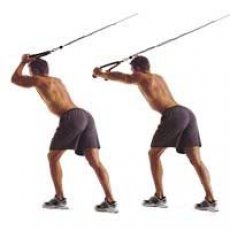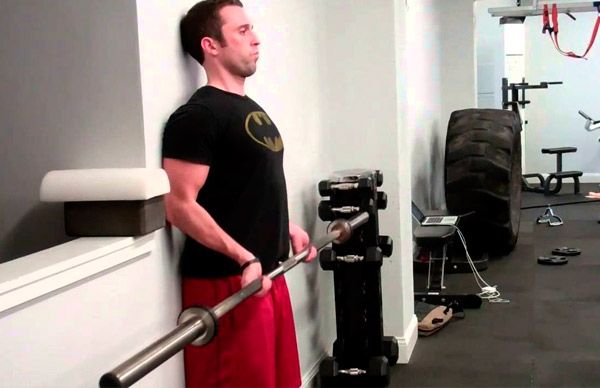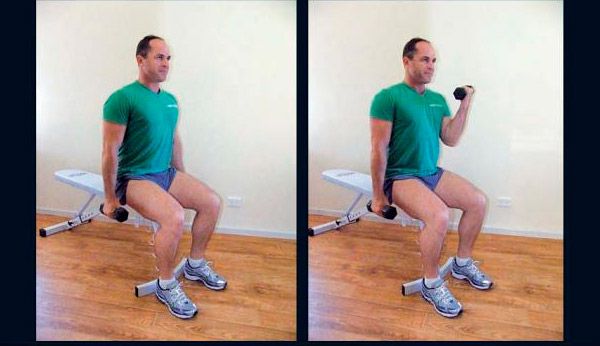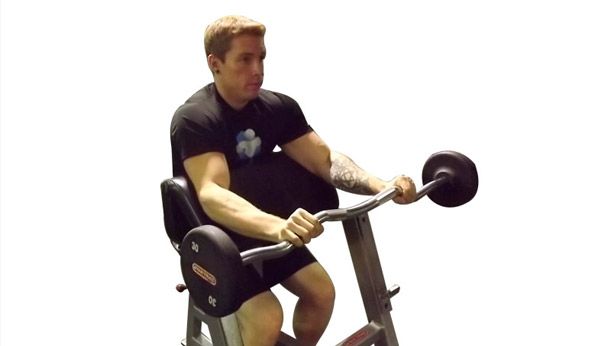
All iLive content is medically reviewed or fact checked to ensure as much factual accuracy as possible.
We have strict sourcing guidelines and only link to reputable media sites, academic research institutions and, whenever possible, medically peer reviewed studies. Note that the numbers in parentheses ([1], [2], etc.) are clickable links to these studies.
If you feel that any of our content is inaccurate, out-of-date, or otherwise questionable, please select it and press Ctrl + Enter.
Arm Exercise Program: Strong Arms
Last reviewed: 08.07.2025

Perform this program as a whole or in sections. Remember that the biceps act as secondary movers in many back exercises, and the triceps assist in many chest and shoulder movements. So consider training your triceps on the same days as your chest and shoulders to create an additional challenge. Likewise, do biceps exercises on the days you work your back. Train your arms no more than twice a week.
Depending on which program you choose, do your arm exercises either at the end of your upper body routine or on days when you don't do any upper body work at all. That way, you'll never overwork your arms and they'll be able to assist in your larger muscle exercises.
First week
Create your own exercise program by doing exercises 1 and 2 from sections A and B (see below), as well as the movements from section C
Number of approaches of each exercise: 3
Overall, your program should consist of 18 sets.
Number of repetitions per approach: 8-12
Speed of each repetition: 2 seconds up, 2 seconds down
Rest between sets: 15 seconds
Perform this program 2 times a week
 [ 1 ]
[ 1 ]
Second week
Create your own exercise program by doing exercises 2 and 3 from sections A and B, as well as the movements from section C
Number of approaches of each exercise: 3
Overall, your program should consist of 18 sets.
Number of repetitions per approach: 8-12
Speed of each repetition: 2 seconds up, 2 seconds down
Rest between sets: 15 seconds
Perform this program 2 times a week
Third week
Create your own exercise program by doing exercises 1 and 3 from sections A and B, as well as the movements from section C
Number of approaches of each exercise: 3
Overall, your program should consist of 18 sets.
Number of repetitions per approach: 8-12
Speed of each repetition: 2 seconds up, 2 seconds down
Rest between sets: 15 seconds
Perform this program 2 times a week
Week 4
Create your exercise program by doing all the exercises from Section A, then Section B, then Section C.
Number of approaches of each exercise: 3
Overall, your program should consist of 24 sets.
Number of repetitions per approach: 8-12
Speed of each repetition: 2 seconds up, 2 seconds down
Rest between sets: 15 seconds
Perform this program 2 times a week
Section A
Wall curls (biceps)
Stand with your feet and hands shoulder-width apart against a wall and hold a light barbell in front of your thighs. Press your back against the wall so that your head, back, and triceps, as well as your heels, touch the wall. Keep your elbows close to your body, bend your arms at the elbows, and slowly lift the barbell to your shoulders. Squeeze your biceps, then slowly lower the barbell.

Watch your form: There's almost no room for cheating when doing this move against a wall. Keep your head, back, and triceps on the wall, and make sure you don't slide down.
 [ 2 ]
[ 2 ]
Alternating Grip Curls (Biceps, Brachialis, Forearms)
Sit on the edge of a bench and hold dumbbells in your hands, arms straight at the sides of the body, palms facing inward, back straight. Bend your arms at the elbows and lift the dumbbells up until your thumbs are near your shoulders. Tighten your biceps and lower the dumbbells. Then turn your wrists inward so that your palms are facing you. Slowly lift the dumbbells up, then slowly lower them.

Watch your form: Don't rotate your wrists as you curl your arms, as some biceps exercises require you to do. Rotate them only at the end of each rep.
Pause Reverse Curls (Biceps, Brachialis, Forearms)
From a standing position, hold a light barbell with an overhand grip (palms facing down). Keep your elbows close to your body. Slowly lift the bar, bending your elbows until your forearms are parallel to the roller. Hold for 3 seconds, then continue lifting the bar until it reaches your chest. Slowly lower the bar until your forearms are parallel to the floor again. Hold for another 3 seconds, then lower the bar to the starting position.

Watch the form of the exercise: At first, lift only the bar without additional weights. Do not cheat by turning your elbows outward and forward. Your elbows should be pointing down all the time.
Section B
Lat Pulldown with Wrist Rotations (Triceps)
Attach the rope to a cable on a high pulley and hold one end of the rope in each hand. The distance between your hands is 15-20 cm. With your upper arms close to your body, pull the rope down until your forearms are parallel to the floor. This is the starting position. Slowly pull the rope down until your hands reach your hips, then rotate your wrists so that your palms are facing outward. Squeeze your triceps for a second, then reverse the movement to return to the starting position.
Watch your form: Look straight ahead the entire time. If you look down, you will lean forward, using your shoulders to perform the movement.
Cross Shoulder Extensions (Triceps)
Lie on an incline bench and hold a light dumbbell in your right hand overhead, palm facing left. Place your left hand on your right triceps for support. Slowly bend your right arm to lower the dumbbell toward your left shoulder, keeping your wrist straight throughout the exercise. (You may need to tilt your head to the right and keep it that way throughout the exercise.) Raise the dumbbell back overhead and repeat one set. Switch arms for the next set.
Maintain proper form: Make sure your upper arm does not move as you lower your arm. This will take the strain off your shoulders.
Triceps Extensions with Lat Pulldown (Triceps)
Attach the rope to a cable on a high pulley. Stand with your back to the pulley, lean forward, one foot in front of the other, and hold the rope directly above your head, legs bent. (Your upper arms should be nearly parallel to the floor.) Straighten your arms in front of you. Pause, then slowly allow the resistance to pull your arms back behind your head.
Watch your form: If your shoulders move up and down, you're engaging your chest muscles instead of your triceps.
Section C
Wrist (forearm) rotations
Hold light dumbbells in your hands, arms at your sides, palms facing back. Bend your arms and lift the dumbbells, forearms parallel to the floor. This is the starting position. Rotate your wrists until your palms are facing up, then rotate them back so your palms are facing down. This is one rep.
Watch your form: Move as slowly as possible. If you rush, you will use fewer muscles and put your tendons at risk of injury.
Double wrist twists (forearms)
Sit on a bench with your feet on the floor and hold 1.5-2.5 kg dumbbells in your hands. Place your forearms on your thighs so that your wrists do not touch your knees (You may have to bend forward a little). Bend your arms only at the wrists and lower the dumbbells as low as possible, then raise them as high as possible. Do another set. Then do the same, but this time with your palms facing up.
Maintain proper form: Imagine that your forearms are glued to your legs, this will prevent your biceps from engaging.
